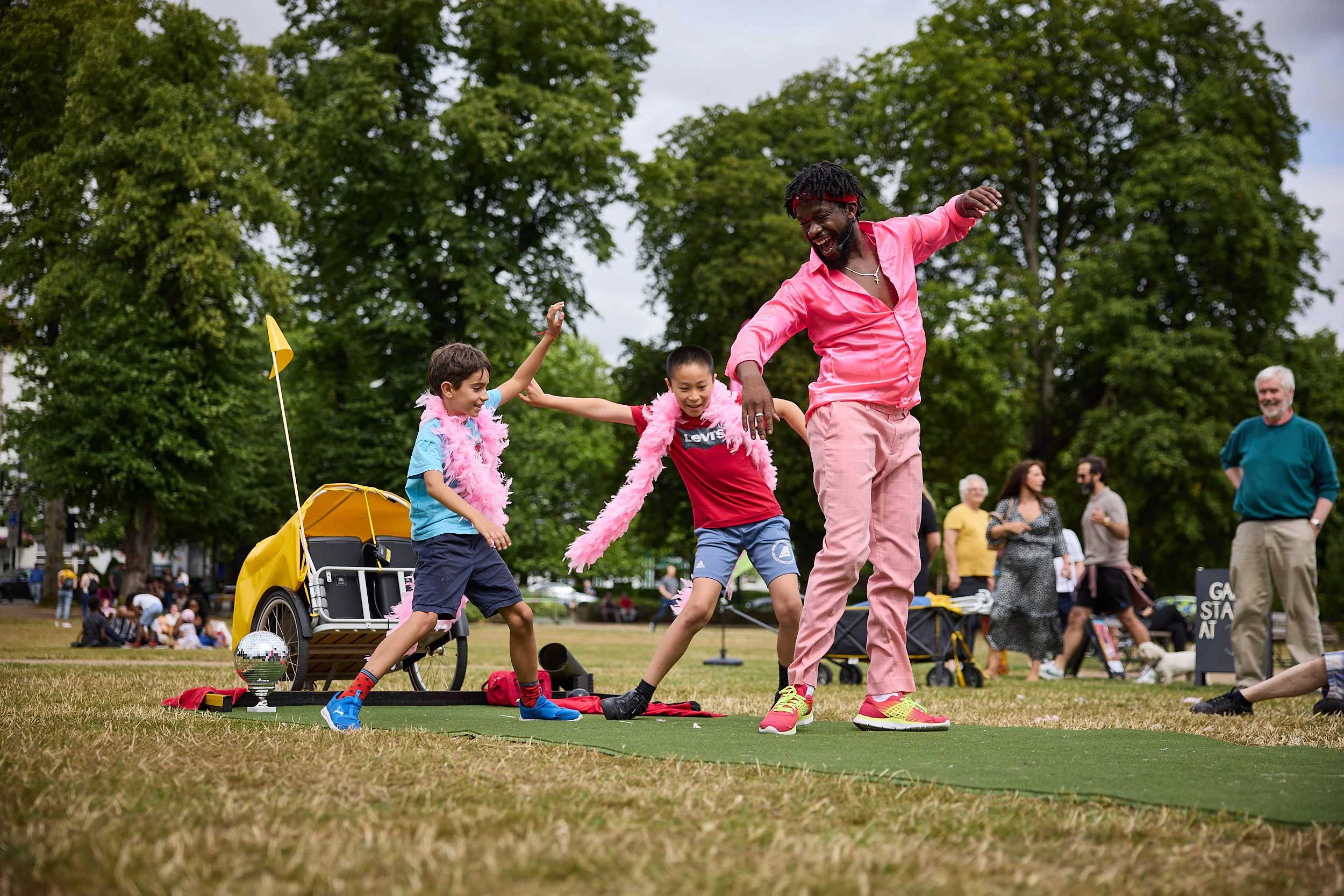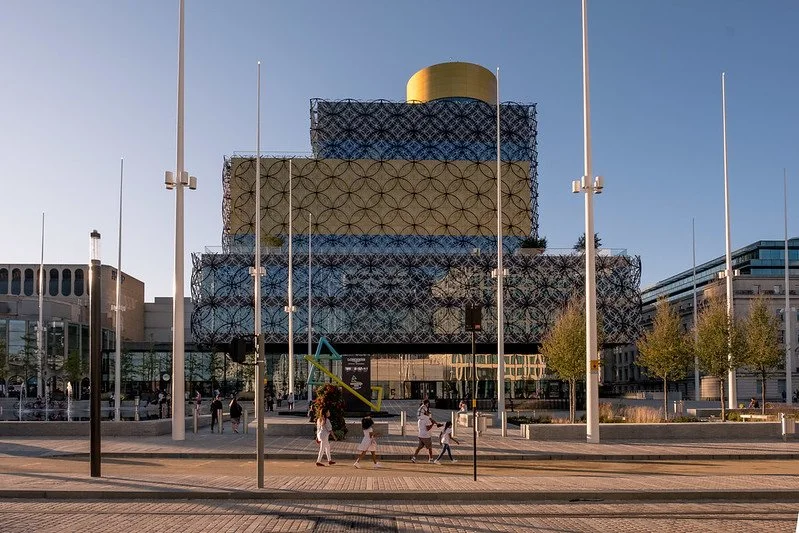Pillar 1: The Creative City
This pillar of our framework makes the strongest case possible for the central role of culture and the arts in securing growth and prosperity. It then looks at innovative models for investment, support and greater commercialisation and collaboration across the sector to secure the resources needed for success.
Credit: Johan Persson
Credit: Jamie Gray
Investing in the creative economy
Not everything should come down to numbers. If you discover a secret passion for the samba, write your first poem, or have your world rocked by Black Sabbath as a ballet, the monetary value of such moments of wonder should hardly be front of mind. The fact is though, that the arts, culture and wider creative industries do have very significant economic value. These allied sectors are of pivotal importance to the economy and underpin thousands of jobs and a vibrant tourism sector.
Birmingham’s cultural sector plays a significant role in the local and regional economy, not only as a source of employment and income generation but also as a driver of tourism, community engagement, and social capital, including better health outcomes.
Culture and the arts directly generate around £200 million in economic activity each year for Birmingham across around 450 different organisations, employing approximately 3,300 people (circa 5,000 people if freelancers are included). This economic activity then cascades through to the wider creative industries (e.g. design, creative technology, games production, fashion), which has an even greater footprint for Birmingham, with 14,525 people employed, generating £1.13 billion (source below) across this wider creative sector.
If you then look at tourism and the visitor economy, and how the effervescent cultural life of Birmingham pulls in visitors that eat in our restaurants and stay in our hotels, all of that unlocks a further £1.15 billion in what’s known as ‘Gross Value Added’ economic activity each year. According to our figures for 2023, we welcomed 47.54 million visitors to the city, with an associated economic impact of £9.25 billion (STEAM data).
Credit: Iona Firouzabadi
Without even adding in the economic uplift of better health, stronger educational outcomes, and overall brand reputation for the city through culture, the fact is that culture unlocks billions of pounds in value for Birmingham, every single year.
And all of this means that an investment in culture for a city like Birmingham is a sound investment, one that will be repaid many times over and that regrettably in recent years has seen significant cuts made. Cultural investment has for generations been a core budget line for successful cities and a central aspect of strategic regeneration and renewal. Barcelona spends 5-7% of its annual city budget on culture for example.
What does cultural investment actually look like? It means dedicated resources supporting people, programmes and places. In the spatial section of the framework, which we’ve called ‘The Placemakers’, we will examine our cultural infrastructure and where we need greater investment. When it comes to people however, the economic analysis carried out for this strategic framework signals a clear warning – that this absolutely crucial sector for Birmingham may in fact be in decline.
If you take a look at employment levels across the entire sweep of culture, arts, creative industries and leisure and tourism, there was a 2% fall in employment levels between 2017 and 2022, compared to a 2% growth rate across England. There are also fewer people in the sector as a percentage of the population than for England, at 11% versus 15%. The steepest fall has been seen in the performing arts, with a fall of 5% in the number of people employed. There was a similar decline in employment levels for the arts across the wider West Midlands whereas again, nationally the trend was slightly upward with an increased headcount of 2%.
The picture is similar if you examine the creative industries in Birmingham, where a similar fall can be seen. Some areas such as design, software and photography have seen some growth over the last five years, which is contrasted with a couple of areas where steeper declines have been recorded, such as advertising and marketing (down 10%) and crafts (jewellery, down 9%).
For culture and the arts across Birmingham, while the figures for employment are declining, the actual number of individual businesses active in the sector grew slightly, by 1% over the last five years.
What’s clear from this recent examination of sector health is that an area of activity for Birmingham that is clearly worth billions of pounds and which had been showing strong growth during the 2010s is, at best, flatlining and at worst may be seeing a level of decline that could have a domino effect on the wider city economy if not countered.
In addition to making the case for investment in culture stronger than ever in terms of public support, this analysis also redoubles the urgency with which more innovative and wider strategies for unlocking cultural investment should be looked at by partners across the city.
If the cultural life of the city is to be sustained – with all that means for reputation, regeneration, business, talent retention or attraction and, more generally, the quality of life we all enjoy – then the case for investment needs to be made with ever greater force.
Sources: Hatch Cultural Economy Rapid Baseline Study, 2024; Barcelona one-on-one interview with Head of Culture.
Credit: Birmingham Museums Trust
Credit: Johan Persson
West Midlands Cultural Enquiry
Survey responses on cuts to funding
Culture Forward at the University of Birmingham
Co-financing culture
For over a decade, public support for key areas of culture and the arts in Birmingham and the West Midlands has been subject to spending cuts which, with the advent of a Section 114 Notice being served on Birmingham City Council, have only accelerated during 2024 and into 2025. As a result, swingeing cuts in both funding and programmes are being felt across the sector, with the potential to do permanent damage to the city’s cultural infrastructure.
At the same time, the city itself is clearly still ‘open for business’ and in many key areas, thriving. The last available ‘Crane Count’ from the consultancy Deloitte tracks what it describes as a record year for development in 2023.
Highlights from the Crane Count include:
A new record for tall buildings reaching new record heights at 51 storeys;
20 new construction starts across 19 schemes and with 44 total schemes underway;
31 residential schemes, nine office, three student, one hotel, one healthcare, and one education development;
409 hotel rooms completed in 2023 and 229 rooms currently under construction – a further 1,070 rooms are also planned; and
591,134 sq. ft. of office floorspace completed in 2023, over four times the total recorded in 2022.
Advocating for and unlocking further funding opportunities for culture and enabling, where possible, existing publicly funded cultural programmes to be available as match for new public & privately funded cultural initiatives.
Development hotspots include the Jewellery Quarter and Digbeth, and of course the arrival of HS2 makes investment in further schemes all but certain. As it concludes its Crane Count survey Deloitte highlights the creativity of the city and its creative industries specifically as being a factor in making it such an attractive location, with Digbeth cited as a particular hotspot.
In fact for the financial year 2022/23 the West Midlands region attracted the largest share of foreign direct investment (FDI) outside London, with 181 projects, a 171% increase from the previous 12 months. This saw the region overtake the South East for the first time, and also created more than 8,200 jobs in the same period.
Sustaining and broadening support for the sector
The critical challenge set out in this strategic framework is how to ensure that a solid stream of investment, in line with or above inflation, continues to flow into culture and the arts, given that it clearly plays such a key role in underpinning the investments outlined above.
Culture in many ways ‘de-risks’ major investments and business relocations to the city, by ensuring that the quality of life and ‘vibe’ offered by Birmingham means that talent continues to be attracted to what is ‘Britain’s Youngest City’. Arts Council England and other public bodies continue to support culture, but the cuts have still been significant.
This framework makes a continued and strong case for public investment in culture and the Compact will continue to lobby for the resources the sector needs through public support. Difficult decisions are of course having to be made on the priorisation of public funds, but here we also propose a series of actions to broaden the funding base for culture and the arts.
We are proposing to explore a number of routes to see greater support for culture, and ‘The Placemakers’ section of this framework sets out how cultural provision could be made a more direct part of the planning and development process. In this pillar of our framework we propose three areas of action to develop new funding streams:
Two new investment funds to be established for culture;
The development of micro-giving and everyday philanthropy; and
A City Accommodation BID.
These areas for action are outlined below and are shaped by the most simple of principles: if an area of business and investment is thriving in the city, and it is a reasonable assertion to say the cultural life of the city has contributed to that success, then it is only fair to ask for support for the arts to flow back into the sector that has created a more compelling investor proposition for the City of Birmingham.
The sector will need to be engaged in a dialogue around how any new funds are prioritised, managed and allocated, with possibilities including a new panel of peers or funding board, reporting back into the Cultural Compact.
Credit: Joe Bailey, FiveSixPhotography

Global Examples of the Visitor Levy in action
In 2024 alone, a number of countries brought in a tourist levy: in Italy, Venice is charging day tourists a fee as of spring 2024. Day-trippers are required to pay a fee of €5 a day, while the rate for overnight visitors ranges between €1 and €5 per night.
Sector commercialisation
The cultural sector in our city has already worked hard, collaboratively, on building greater trading income and commercialisation into the business models of our major institutions. Through the Compact and the partnership around Culture Central we will continue to support an entrepreneurial spirit across the sector through activities such as retail, food and beverage, and the pursuit of commercial sponsorship.
In fact, through the Cultural Compact there is a clear opportunity and appetite to use this framework to share our vision for culture and work across cultural organisations to create collaborative bids for funding and sponsorship with higher levels of ambition than might be the case if organisations were working on their own.
Credit: Hannah Fathers
Building cultural legacy
Closely aligned with a push to co-finance culture through investments in urban development and regeneration is the idea that every major programme, event or initiative should have as part of its strategic focus, the building of a greater legacy for culture and the city. Examples could include the initiative to make Birmingham a national centre for developing dance, resulting in The Dance Hub facility built at Birmingham Hippodrome; at a national level, ‘The Spirit of 2012’ is also a good exemplar.
In the consultation for this framework some have commented that the cultural legacy of the 2022 Commonwealth Games has not been felt strongly enough, perhaps because the city has been through some significant challenges, but that for future activities (e.g. The Invictus Games), we should consider adopting a common approach to planning for the legacy impact of major programmes.
Cultural Action Areas
A clear priority for Birmingham is the need to support grassroots culture and to see culture thriving in every neighbourhood across the city, not just the city centre.
One initiative that is helping with this is the City Council’s own Cultural Action Areas programme. Originated out of a Local Enterprise Partnership programme it is now on its third round of funding investing in culture to help grow local economies, building on the culture and heritage to be found across Birmingham's high streets and local centres.
Led by consortiums of local stakeholders and leaders, Cultural Action Areas are playing a major role in driving place-based economic growth and improving
Pillar 1: Action Areas










![A performance of The Nutcracker at the Royal Birmingham Ballet - © Johan Persson [1]](https://images.squarespace-cdn.com/content/v1/67ebfd815847337f18418970/bf5c0767-f640-4302-872c-23ccf86cf62d/The+Nutcracker+-+%C2%A9+Johan+Persson+%5B1%5D.jpg)




